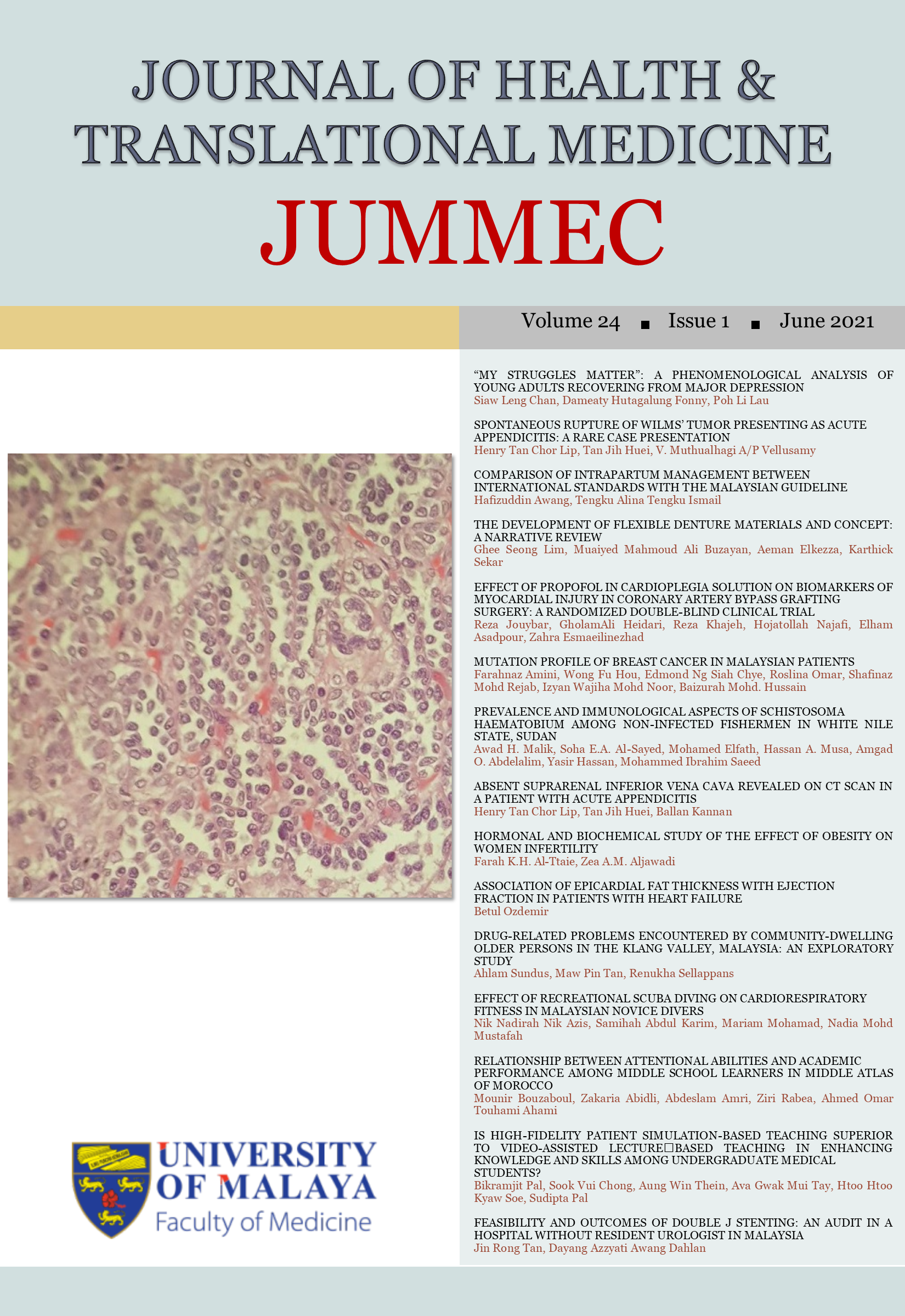EFFECT OF RECREATIONAL SCUBA DIVING ON CARDIORESPIRATORY FITNESS IN MALAYSIAN NOVICE DIVERS
Received 2020-09-09; Accepted 2021-01-13; Published 2021-04-27
DOI:
https://doi.org/10.22452/jummec.vol24no1.12Keywords:
Recreational Diving, Scuba Diving, Diving Medicine, Oxygen Consumption, ExerciseAbstract
Objective: The aim of this study was to investigate scuba diving induced exercise response in novice divers as required in open water scuba diving certification.
Methods: Maximal cardiopulmonary exercise test (CPET) was performed in 30 novice divers before and within 24 hours after a standard scuba diving open water certification diving protocol of four open water dives.
Results: A significant increase in maximal oxygen consumption (VO2max) in mL·kg-1·min-1 after scuba diving training [25.84 (6.0) vs. 27.04 (7.0)] (p<0.05) suggestive of an increase in exercise performance. Ventilatory drive (VE/VCO2) also showed a significant increase 27.95 (2.7) vs. 30.07 (5.3). Ventilatory anaerobic threshold (VAT), blood pressure and lung function parameters showed no significant differences with open water scuba diving certification training.
Conclusion: In novice divers, repeated training exposure during open water scuba diving certification results in increased cardiorespiratory fitness. Although further corroborating studies are needed, this would suggest that recreational scuba diving may be an option for exercise promotion in the future.
Downloads
Downloads
Published
Issue
Section
License
All authors agree that the article, if editorially accepted for publication, shall be licensed under the Creative Commons Attribution License 4.0 to allow others to freely access, copy and use research provided the author is correctly attributed, unless otherwise stated. All articles are available online without charge or other barriers to access. However, anyone wishing to reproduce large quantities of an article (250+) should inform the publisher. Any opinion expressed in the articles are those of the authors and do not reflect that of the University of Malaya, 50603 Kuala Lumpur, Malaysia.


